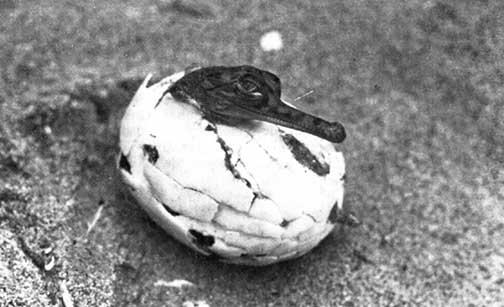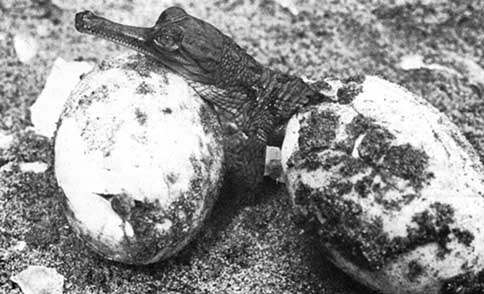Saving India's crocodiles - A success story
The useful reindeer
As a result of concern for the future of the Indian gharial (Gavialis gangeticus) crocodile, the Government of India sought assistance from UNDP in carrying out a status survey. An FAO report (1974) noted that the gharial was on the verge of extinction, that the saltwater crocodile (Crocodylus porosus) was extremely rare and that the Indian mugger (Crocodylus palustris) although a depleted species was not threatened with extinction in the foreseeable future.
After accepting the report, the Government sought UN assistance in initiating a project for the conservation and management of all three species. It accepted the suggested procedure of rapid multiplication of the populations by collection of eggs laid in the wild for captive incubation, raising of the resultant young, and restocking of specially selected sanctuaries with juveniles of 1.20-m length - at which age they are free from predation other than by man. Protection under the project, quite apart from releases of captive-reared stock, is resulting in the gharial making a comeback. By March 1979, there were increases of 200 animals restored to the wild. The wild population is expected to exceed 1000 animals of more than 2-m length by early 1981, after which the number can be expected to double rapidly. The project has also carried out a well-coordinated programme of research on other Indian crocodiles. The Government of India, FAO and UNDP have laid stress on training. The Central Crocodile Breeding and Management Training Institute, located in Hyderabad, took in its first trainees in December 1978.
The available habitat for all three crocodile species has become greatly reduced as a result of a wide range of development activities. What is important for the future is not merely the total number of crocodiles, but to ensure that they are distributed among national parks and sanctuaries in different parts of the country, something that has not been possible, for instance, with the great Indian rhinoceros or the Indian lion. The real problem - the necessity of retaining large sanctuary areas free from all types of human interference, including pollution - lies in the future. Relentless pressure will continue to be applied to India's forests, and hence to its sanctuaries.
The Indian crocodile project has been a major success story in the Asian wildlife scene. No country has done more than India to conserve its crocodiles and nowhere has the effort met with such marked success. The initiation of the project has coincided with (and perhaps to some extent has also been instrumental in creating) a wave of interest in wildlife and its conservation in India.
from "Crocodile conservation in India" by N.D. Jayal, in Tiger Paper, VII: 4, October 1980, p. 1-3
Gharials (Gavialis gangeticus), Indian freshwater crocodiles that were near extinction, are now increasing in number and protected at a crocodile egg hatchery and farm near Orissa in eastern India



Wildlife authorities in Alaska have decided to increase the reindeer population there. The herds that once numbered 600 000 are now down to 30 000. The plan is to replenish this species, native to the Alaskan tundra, for the main purpose of creating a new wildlife industry. For example, reindeer in Finland constitute a significant economic wildlife resource providing meat, for which there is a strong market, as well as fur and antlers for sale, mostly to tourists.